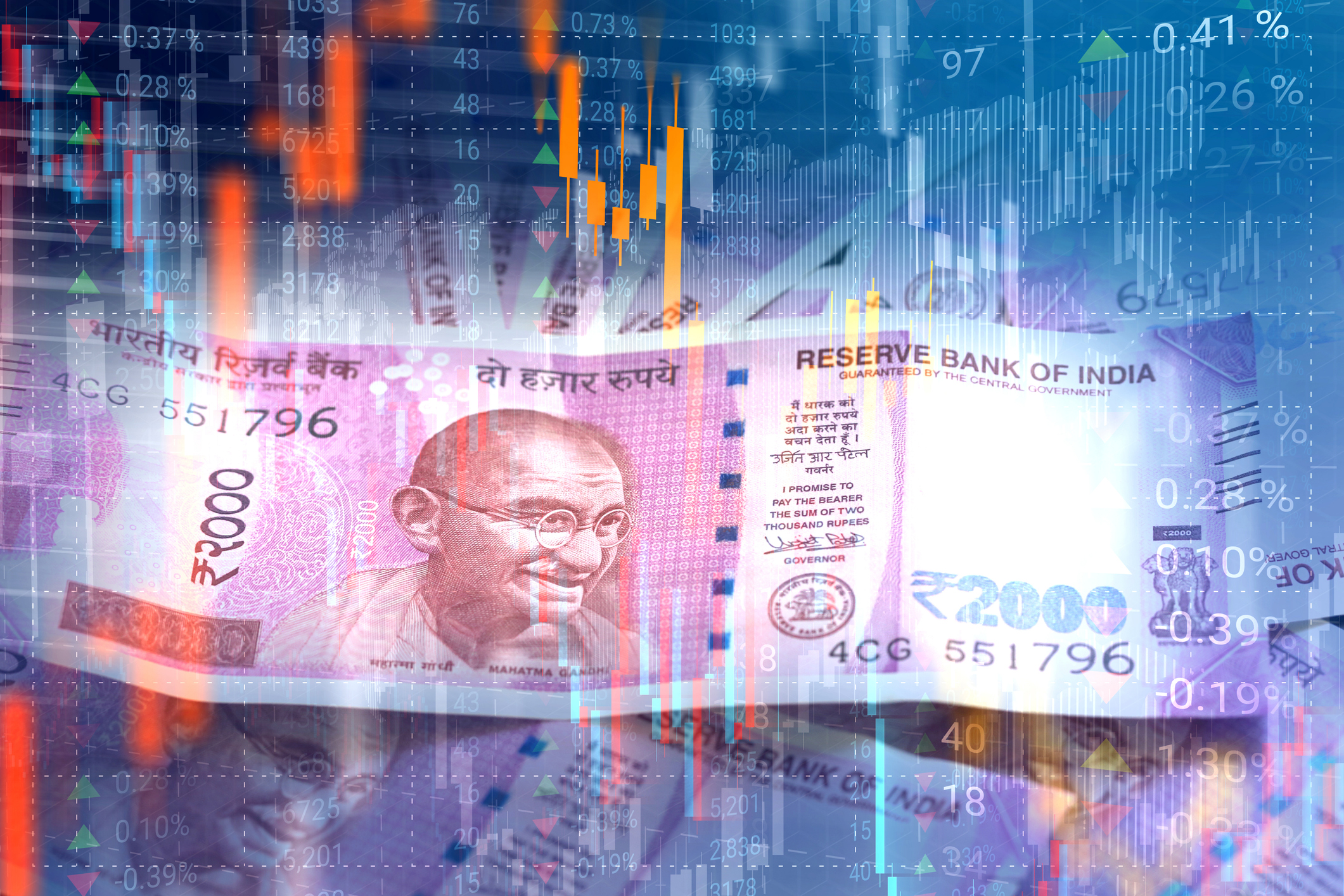Shining a light on India
Despite some short-term challenges, India remains very attractive for investors. Here’s why.

By Kristy Fong, Investment Manager, Aberdeen New India Investment Trust PLC
After two harrowing years of living through the pandemic, the festive season has arrived in India and is set to continue the sense of normalcy that has returned to India in recent times.
Last month, we made our first trip back to the country since borders reopened. We found sidewalks were once again bustling with people and roads were congested with bumper-to-bumper traffic. From speaking to companies on the ground, we sensed a general air of optimism around demand and momentum staying strong in the economy.
MoneyWeek
Subscribe to MoneyWeek today and get your first six magazine issues absolutely FREE

Sign up to Money Morning
Don't miss the latest investment and personal finances news, market analysis, plus money-saving tips with our free twice-daily newsletter
Don't miss the latest investment and personal finances news, market analysis, plus money-saving tips with our free twice-daily newsletter
Still, some dark clouds loom overhead – prices of fuel and materials remain high while supply shortages mean a longer waiting time for big -ticket purchases like cars. Despite short-term challenges, we remain positive about India.
Broadly, we think India is an attractive opportunity both in Asia and across emerging markets. There are several reasons for it. First, it is one of the largest consumer markets outside the US and China, with a massive, predominantly young population. Second, the middle class there is expanding with rising levels of disposable income. Finally, the government is both reforms-oriented and business friendly, and has a parliamentary majority.
Covid-19 accelerated India’s push towards digitalisation, which was already underway prior to that. There are over 400 million internet users in the country, which has generated new business models in areas such as e-commerce and finance. Due to the pandemic, there has been an impressive virtual evolution of Indian banking apps that rival, or are better than, those offered by their developed market counterparts, while e-commerce offerings and delivery services are just as compelling. Smartphones have also become prevalent in every corner– we saw them in the hands of pedestrians and lodged on driver dashboards of compact cars and modified three-wheelers on India’s busy roads.
Further, we like the country’s desire to become a global manufacturing hub. We have seen the government’s “Make In India” campaign to incentivise foreign companies to shift their production to India through measures like production-linked incentive schemes, favourable corporate tax rates, an easier land acquisition process and the repealing of a controversial retrospective tax law. Global companies are therefore drawn to the opportunities that India has to offer. In addition, the size of the Indian economy is still relatively small, which implies that there is plenty of room for robust, longer-term growth.
The Indian stock market is also home to some of the highest quality companies in the region, with highly capable management teams. On a year-to-date basis, the market has outperformed both Asia Pacific ex-Japan and global emerging markets. Segments where India excels include financial services, consumer sector, and health care where we hold quality companies like HDFC, Maruti Suzuki and Hindustan Unilever. While the IT services sector is facing near-term challenges due to worries around a potential recession on the horizon, it remains an attractive segment in the long term, along with internet and renewables companies, where we hold exciting digital future companies such as Delhivery and PB Fintech, which runs the online insurance aggregator Policybazaar.
Looking ahead, we believe India today is in a much better position to withstand the current environment of high inflation and rising interest rates globally. Its domestic-oriented economy has been able to buck the slowing growth trend seen in other major economies around the world. A pickup in factory and services activities have underpinned the recovery from the pandemic. There are signs of accelerating credit growth. Infrastructure is being built – India already boasts impressive 7-lane freeways connecting commercial areas, like those seen in Gurgaon near New Delhi. Consumers are also spending more while affordability in the housing market has improved, even as interest rates are rising.
These are just a few examples of the turnaround that is already happening in the economy. In a pro-growth budget earlier this year, the Indian government earmarked significant spending into infrastructure and housing. Like in most parts of the world, inflation is high, but its impact on economic activity is not as severe. That said, if interest rates continue to spiral upwards, it could eventually have an impact on growth as well as on the stock market but, for now, the strength of the domestic economic story is providing a welcome balance.
Due to the economic disruption over the past two years, there is likely to be pent-up demand for goods and services this festive season – from smartphones to consumer electronics and apparels to big-ticket purchases like cars. E-commerce sales are also likely to accelerate. It will be a timely litmus test for how durable and robust the consumption story is in Asia’s third-largest economy.
Companies selected for illustrative purposes only to demonstrate the investment management style described herein and not as an investment recommendation or indication of future performance.
Important information
Risk factors you should consider prior to investing:
- The value of investments, and the income from them, can go down as well as up and investors may get back less than the amount invested.
- Past performance is not a guide to future results.
- Investment in the Company may not be appropriate for investors who plan to withdraw their money within 5 years.
- The Company may borrow to finance further investment (gearing). The use of gearing is likely to lead to volatility in the Net Asset Value (NAV) meaning that any movement in the value of the company’s assets will result in a magnified movement in the NAV.
- The Company may accumulate investment positions which represent more than normal trading volumes which may make it difficult to realise investments and may lead to volatility in the market price of the Company’s shares.
- The Company may charge expenses to capital which may erode the capital value of the investment.
- Movements in exchange rates will impact on both the level of income received and the capital value of your investment.
- There is no guarantee that the market price of the Company’s shares will fully reflect their underlying Net Asset Value.
- As with all stock exchange investments the value of the Company’s shares purchased will immediately fall by the difference between the buying and selling prices, the bid-offer spread. If trading volumes fall, the bid-offer spread can widen.
- The Company invests in emerging markets which tend to be more volatile than mature markets and the value of your investment could move sharply up or down.
- Yields are estimated figures and may fluctuate, there are no guarantees that future dividends will match or exceed historic dividends and certain investors may be subject to further tax on dividends.
Other important information:
Issued by Aberdeen Asset Managers Limited, registered in Scotland (No. 108419), 10 Queen’s Terrace, Aberdeen AB10 1XL. Authorised and regulated by the Financial Conduct Authority in the UK. An investment trust should be considered only as part of a balanced portfolio.
Find out more at aberdeen-newindia.co.uk or by registering for updates. You can also follow us on social media: Twitter and LinkedIn.
Get the latest financial news, insights and expert analysis from our award-winning MoneyWeek team, to help you understand what really matters when it comes to your finances.
MoneyWeek is written by a team of experienced and award-winning journalists, plus expert columnists. As well as daily digital news and features, MoneyWeek also publishes a weekly magazine, covering investing and personal finance. From share tips, pensions, gold to practical investment tips - we provide a round-up to help you make money and keep it.
-
 ‘Why I have ditched my Help to Buy ISA for cash savings and the stock market’
‘Why I have ditched my Help to Buy ISA for cash savings and the stock market’Without the 25% bonus, my Help to Buy ISA is effectively redundant, says MoneyWeek writer Sam Walker.
-
 Is your inheritance tax allowance cut if you sell to downsize or sell your home to pay for care?
Is your inheritance tax allowance cut if you sell to downsize or sell your home to pay for care?Downsizing relief is a little-known benefit that could save your loved ones tens of thousands of pounds in inheritance tax after you’ve died.
-
 Modi’s reforms set Indian stocks on fire
Modi’s reforms set Indian stocks on fireIndian stocks pass a new milestone, but global fund managers are holding back. Are there signs of overheating?
-
 Halifax: House price slump continues as prices slide for the sixth consecutive month
Halifax: House price slump continues as prices slide for the sixth consecutive monthUK house prices fell again in September as buyers returned, but the slowdown was not as fast as anticipated, latest Halifax data shows. Where are house prices falling the most?
-
 Rents hit a record high - but is the opportunity for buy-to-let investors still strong?
Rents hit a record high - but is the opportunity for buy-to-let investors still strong?UK rent prices have hit a record high with the average hitting over £1,200 a month says Rightmove. Are there still opportunities in buy-to-let?
-
 Pension savers turn to gold investments
Pension savers turn to gold investmentsInvestors are racing to buy gold to protect their pensions from a stock market correction and high inflation, experts say
-
 Where to find the best returns from student accommodation
Where to find the best returns from student accommodationStudent accommodation can be a lucrative investment if you know where to look.
-
 The world’s best bargain stocks
The world’s best bargain stocksSearching for bargain stocks with Alec Cutler of the Orbis Global Balanced Fund, who tells Andrew Van Sickle which sectors are being overlooked.
-
 Revealed: the cheapest cities to own a home in Britain
Revealed: the cheapest cities to own a home in BritainNew research reveals the cheapest cities to own a home, taking account of mortgage payments, utility bills and council tax
-
 UK recession: How to protect your portfolio
UK recession: How to protect your portfolioAs the UK recession is confirmed, we look at ways to protect your wealth.

